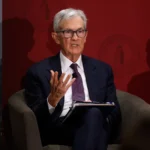On Friday, the atmosphere among trade analysts was charged, with many anticipating an escalation in the ongoing U.S.-China trade tensions. Just the day before, Beijing announced new export controls on rare earth minerals, prompting a swift and somewhat chaotic response from U.S. President Donald Trump. In a verbose post on Truth Social, he threatened to impose a staggering 100 percent tariff increase on Chinese goods and hinted at a ban on key software exports starting November 1. Furthermore, Trump contemplated withdrawing from an upcoming meeting with Chinese President Xi Jinping, leading to a notable drop in equity markets.
By Sunday, however, the president’s stance had visibly softened. Trump’s trade representative, Jamieson Greer, acknowledged that Beijing had “deferred” to Washington in communications, highlighting a shift in the balance of power. Meanwhile, China maintained its ground, asserting its readiness for a trade war and accusing the U.S. of hypocrisy regarding unilateral controls. Observers drew parallels between this situation and the rivalry depicted in “The Princess Bride,” where Trump’s self-proclaimed genius risks collective backlash, while Xi appears more resilient due to China’s established control over rare earth supplies.
Despite these tensions, there is skepticism about whether Trump would escalate matters before the meeting later this month. Some analysts speculate that his confidence in negotiating skills will likely prevent any last-minute cancellations. Concurrently, the administration faces a crucial challenge: without developing alternative supply chains for rare earths, the U.S. remains at a disadvantage in negotiations.
On the broader scale, Washington’s limitations were starkly illustrated by China’s extensive leverage over rare earth extraction and processing—a monopoly that extends beyond its own borders. Recent restrictions mean that any product containing Chinese minerals, even if produced in the U.S., could face delays or restrictions contingent on Chinese approval. The situation creates significant uncertainty for U.S. tech companies relying on these materials, as the new measures come directly from state-owned enterprises with tightly monitored sales practices.
Amid these developments, the Trump administration’s retaliatory measures reflect an ongoing struggle against Chinese advancements in technology and manufacturing. Even as tariffs limit Chinese exports to the U.S., Chinese production strategies have shifted, solidifying its position in global markets despite U.S. pressures.
In a parallel narrative, the global steel industry and Argentina continue to face their own complexities. The European Union recently undertook significant protectionist measures, revising steel quotas and enhancing tariffs, while claiming adherence to WTO guidelines. Observers caution that this protectionism is indicative of a broader trend of trade deflection, stemming from U.S. tariffs that are driving Chinese exports elsewhere in the global market.
Furthermore, the Trump administration’s involvement in Argentina’s economy has raised eyebrows. Last week, the U.S. Treasury took unprecedented steps to support Argentina’s peso through taxpayer-backed funding, a move that some analysts are watching closely for its potential implications on future geopolitical lending strategies.
As uncertain as the global trading landscape remains, it is evident that the geopolitical tensions between the U.S. and China will continue to evolve, with significant ramifications on international trade dynamics. Reports indicate sharp sell-offs in equity markets amid these concerns, underscoring the anxieties gripping investors and companies alike on both sides of the Pacific.







